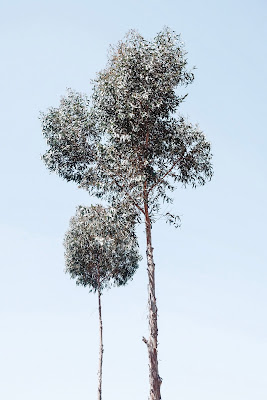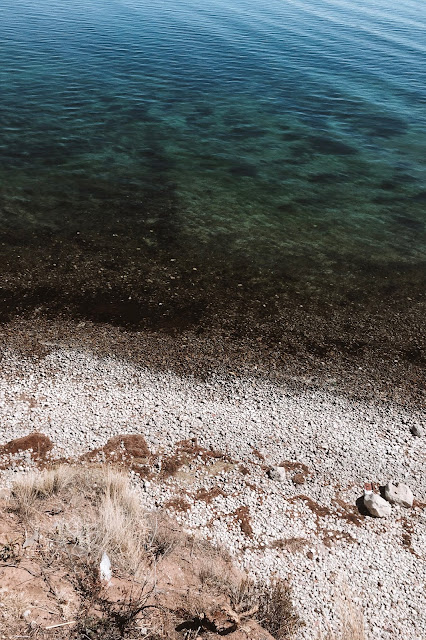
<<>>
Welcome (back) to my page dear friends, strangers, travellers and other kinds of human beings. I must admit that I was left quite surprised by your enthusiastic comments in regards to my previous blogpost where I discussed 10 of La Paz` most curious quirks and perks. For someone who is inclined to criticise her own writing relentlessly, reading your encouraging words truly means a great deal to me, so thanks for that.
Well. By the time you read this piece I`ll have long crossed the border that separates Bolivia from Peru. On board of a tiny, white ferry I`ll have glided across the azure waves of Lake Titicaca - South America`s largest freshwater lake and the world`s highest navigable waterbody situated at an altitude of 3800m above sea level. I`ll have maundered along its shores that are home to crumbling ruins of pre-Incan civilisations and I`ll have climbed the surrounding Andean peaks and soft, rolling hills marked by farmland, fields and vast, desolate stretches of rocky altiplano.
To me, my Titicaca expedition seems like a lifetime ago. To the lake, my visit must not have even occupied a fraction of a second, considering its age. There is no other explanation for it: At the sacred site, the concept of time appears to gain a different meaning. The pictures that I took during my expedition may vouch for such a claim by revealing no traces of change or contemporary human interference; the landscape appears unspoiled, the water ever-blue, even the natives` mannerisms, faces and dialects don`t echo with our period of time. Time then, appears to have been standing still at Titicaca, which allowed the region to not only preserve its hypnotic mysticism and beauty, but also to perpetuate everything else the deep-blue lake stands for:
Incan legend has it that thousands of years ago, the God Viracocha arose from Lake Titicaca after a great flood. First, he commanded the sun (Inti), the moon (Mama Kilya) and the stars to rise. Then, he went to Tiahuanaco in modern-day Bolivia to create the first woman and the first man. Formed from stone and clay, he gave them two orders: To populate the world and to form one of the greatest empires the world has ever seen.
Despite the Incan empire`s ephemerality and eventual decline induced by the Spanish conquest in 1532, ancient traditions and folklore survived thanks to the indigenous communities populating the surrounding areas of Titicaca. The notion that the lake is not only sacred but that it equally represents the very cradle of life and the centre of the cosmos itself is thus still widely believed and passed on. Interestingly, archaeological evidence suggests that local perception isn`t far from the truth: According to research, Lake Titicaca may have indeed once been the birthplace of Latin American culture including the Inca civilisation that went on to build major historical sites such as Cusco or Machu Picchu.
Empires may have risen and fallen in the meantime, but the memory and veneration of a lake that once gave life to all things surrounding it has not. Reflected on the surface of its blue waters, Titicaca is as mystical as ever and recounts the fascinating story of its region in its own pace. If it hasn`t made it onto your bucket list yet, I vehemently suggest you re-evaluate your future travel plans - how many other destinations do you know that were once blessed by the sun, protected by the sky and chosen by the Gods? Just saying...















Despite the Incan empire`s ephemerality and eventual decline induced by the Spanish conquest in 1532, ancient traditions and folklore survived thanks to the indigenous communities populating the surrounding areas of Titicaca. The notion that the lake is not only sacred but that it equally represents the very cradle of life and the centre of the cosmos itself is thus still widely believed and passed on. Interestingly, archaeological evidence suggests that local perception isn`t far from the truth: According to research, Lake Titicaca may have indeed once been the birthplace of Latin American culture including the Inca civilisation that went on to build major historical sites such as Cusco or Machu Picchu.
Empires may have risen and fallen in the meantime, but the memory and veneration of a lake that once gave life to all things surrounding it has not. Reflected on the surface of its blue waters, Titicaca is as mystical as ever and recounts the fascinating story of its region in its own pace. If it hasn`t made it onto your bucket list yet, I vehemently suggest you re-evaluate your future travel plans - how many other destinations do you know that were once blessed by the sun, protected by the sky and chosen by the Gods? Just saying...
<<>>














As always,
thanks for reading
until next time

Hilary Fierce
xx


No comments:
Post a Comment